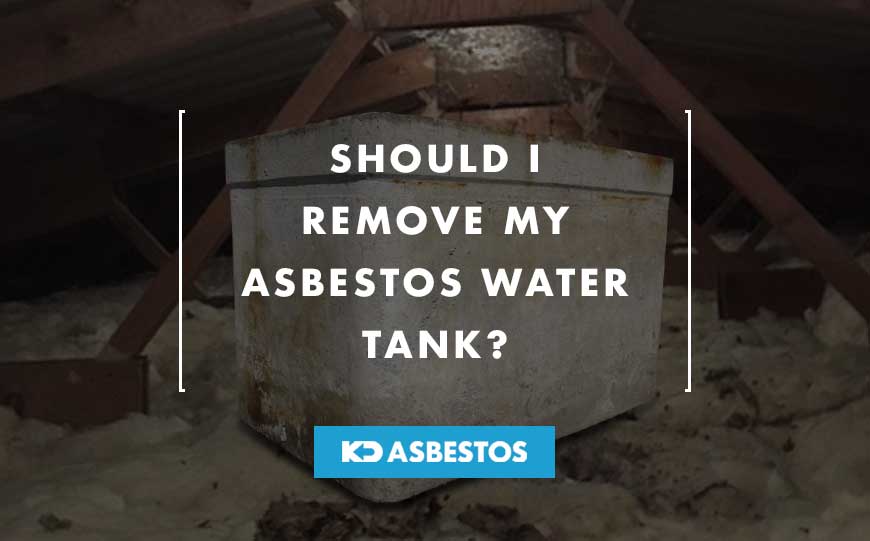
Before the end of last century, asbestos was a popular building material among contractors and building owners.
It was relatively low cost, durable, plus heat and water-resistant.
However, with the developments in technology and the realisation of its extreme risks to health, more restricted use of the material has been advocated.
For instance, the HSE’s Control of Asbestos Regulations 2012 restricted the use of asbestos in the United Kingdom from 2000 onwards.
However, many UK properties still have asbestos present in their homes even after it was banned in 1999.
One common item in place is asbestos water tanks, mostly found in loft spaces.
We’ve compiled a simple guide to removing the asbestos water tanks properties, and who should handle this potentially hazardous job.
Table of Contents
What is an Asbestos Water Tank?
Asbestos water tanks are made with cement containing chrysotile (white asbestos).
It was added to improve the structural strength of the tank.
In most cases, these make up less than 10% of the cement content, which is relatively safe.
However, improper maintenance of these tanks or drilling the tank could cause asbestos fibres to be released into the atmosphere causing serious health hazards if inhaled.
Getting an asbestos surveyor to inspect the asbestos water tank’s condition is highly recommended.
What Does an Asbestos Water Tank Look Like?
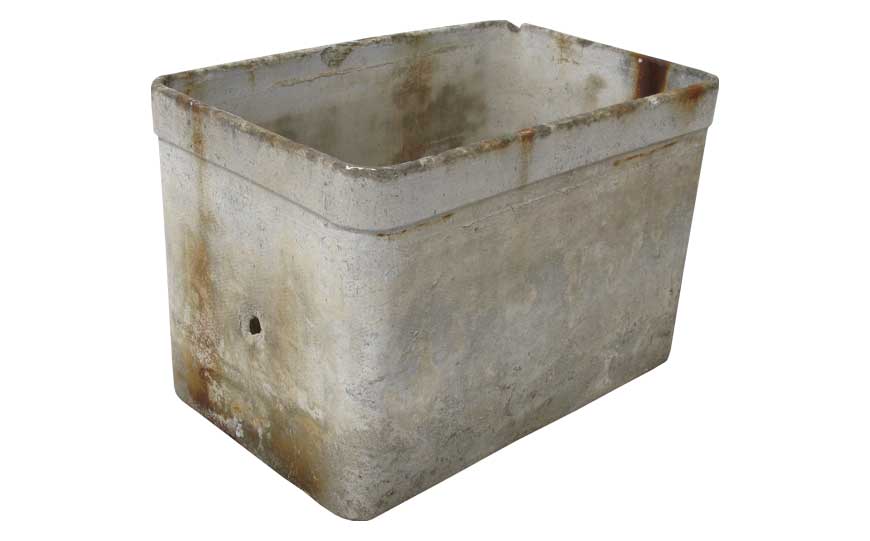
Image credit: Jacopo Wether
Asbestos water tanks are typically concrete tanks found in older buildings.
However, not all tanks made from concrete contain asbestos fibres.
Hence, we always recommend an asbestos survey for all homes built before 1999.
An asbestos surveyor will collect samples of the water tank suspected of containing asbestos fibre for lab testing.
The survey result will recommend removing or maintaining the tanks and evaluating the risk it poses.
Are Asbestos Water Tanks Safe?
A well-maintained asbestos water tank is generally safe to use.
This is because the asbestos fibres used to make the tank are heavily embedded inside the cement material, posing minimal risk.
However, over time the condition of the asbestos water tank’s cement may deteriorate, and asbestos fibres may get released into the atmosphere or the water contained.
In other cases, asbestos fibres may become airborne during a renovation project at the property if the tank becomes disturbed or accidentally damaged.
This exposure poses serious health risks to the occupants of the property.
Common asbestos related diseases include:
- Mesothelioma
- Asbestos-related lung cancer
- Asbestosis
- Pleural thickening
Also, if your asbestos water tank holds drinking water, there is a higher risk of contamination.
If you suspect your water tank is made of asbestos fibre or your property was constructed before 2000, get it inspected by an asbestos surveyor.
We recommend getting the water tank removed safely by a licensed asbestos company.
Health Risks Associated with Asbestos

Image credit: The Armed Forces Institute of Pathology
Asbestos materials are well known to cause serious health-related issues.
According to Health, Safety and Environment (HSE) published research, over 5000 asbestos-related diseases are reported yearly, including cancer and mesothelioma.
There have been 2,544 reported deaths caused by mesothelioma in 2020 alone.
And over 530 deaths from asbestos were reported as the cause of death on their official death certificate.
These fibres can be introduced into the body when one inhales asbestos dust from the atmosphere.
In addition, it can infiltrate your system when asbestos-contaminated foods or drinks are consumed.
People who work closely with asbestos containing materials are more at risk of developing severe health conditions.
Some health risks associated with asbestos include:
- Cancer of the lungs, stomach and bladder.
- Mesothelioma
- Asbestosis
- Diaphragm plague
- Urinary tumour
- Non-malignant pleural diseases
Asbestos fibres can stay in the body for more than 15 years without showing any symptoms.
Patients may only discover asbestos fibres in their system after a decade or two.
If you have been exposed to asbestos, you should visit the nearest clinic for a medical checkup.
Reasons to Remove Your Asbestos Water Tank
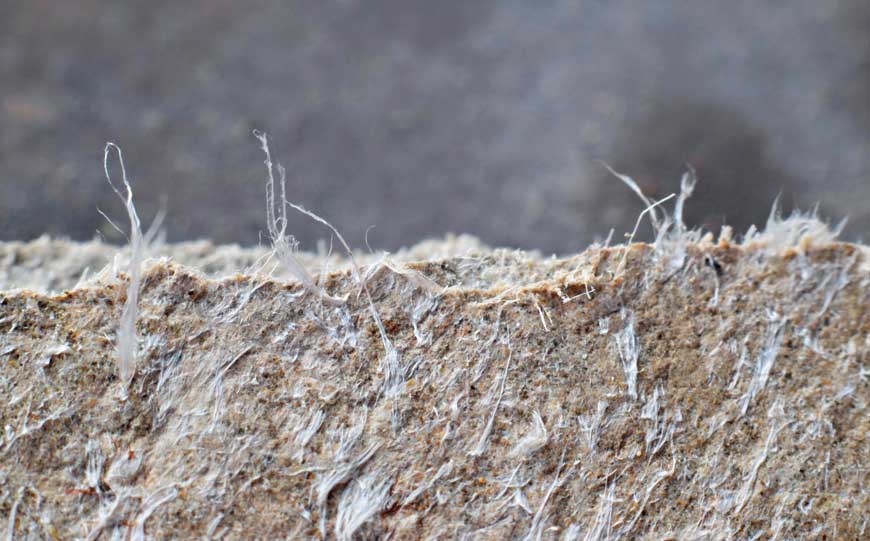
Image source: Shutterstock
There are many reasons to have an asbestos water tank removed from your property.
First, no amount of asbestos exposure is safe.
So it’s right to have it removed as a safety precaution.
Asbestos fibres, when released into the atmosphere, can cause serious complications.
Its colourless nature means you could be exposed without knowing for a long time.
This substance greatly impacts the quality of air in your environment.
Also, removing an asbestos water tank can help you avoid costly liabilities.
According to Regulation 4 of the Control of Asbestos Regulation, 2012, the duty to manage asbestos in non-domestic premises falls on the owner of the non-domestic premises.
Many tenants have sued their landlords for harm caused by an asbestos water tank.
Finally, an asbestos water tank may affect the value of your property.
Many potential homeowners don’t want to be burdened with the cost and risk associated with asbestos disposal.
So, a resale may prove difficult.
Can I Remove the Asbestos Water Tank Myself?
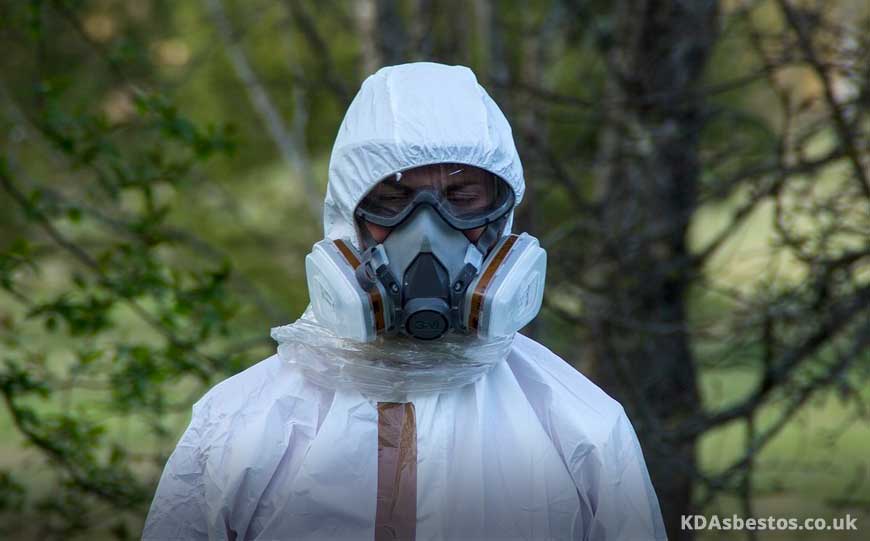
Image credit: Pixabay
Theoretically, anyone can remove an asbestos water tank.
However, considering the health and legal risk associated with this procedure, we recommend you leave it to a professional asbestos surveyor.
Asbestos materials are difficult to locate.
It requires lab tests to identify its presence in a property.
An accredited asbestos company is well-equipped with skills and tools to determine the presence of asbestos.
Furthermore, there is a high risk of exposure during testing.
It is possible to accidentally release microscopic asbestos fibre into the atmosphere, causing serious health hazards.
An asbestos surveyor is well trained to mitigate the risk involved with testing.
Also, there are legal risks to consider.
If removing the asbestos leads to a third-party injury or subjects your neighbours to asbestos exposure.
Although it is not illegal to carry out this procedure yourself, you may still be liable for damages.
We recommend outsourcing to an HSE-licensed asbestos removal company to avoid these risks.
Do I Need an Asbestos Survey?
Asbestos surveyors are experts in dealing with asbestos materials.
They are well skilled in handling, sampling and testing asbestos material.
Also, an asbestos surveyor conducts inspections by collecting samples taken to an accredited lab for testing.
Testing includes:
- Identifying the presence of asbestos in the sample.
- Create a general idea of the overall condition of your water tank.
- Recommend a plan to manage the risk and ensure your water tank is safely disposed of.
Who Should Remove & Dispose of an Asbestos Water Tank?
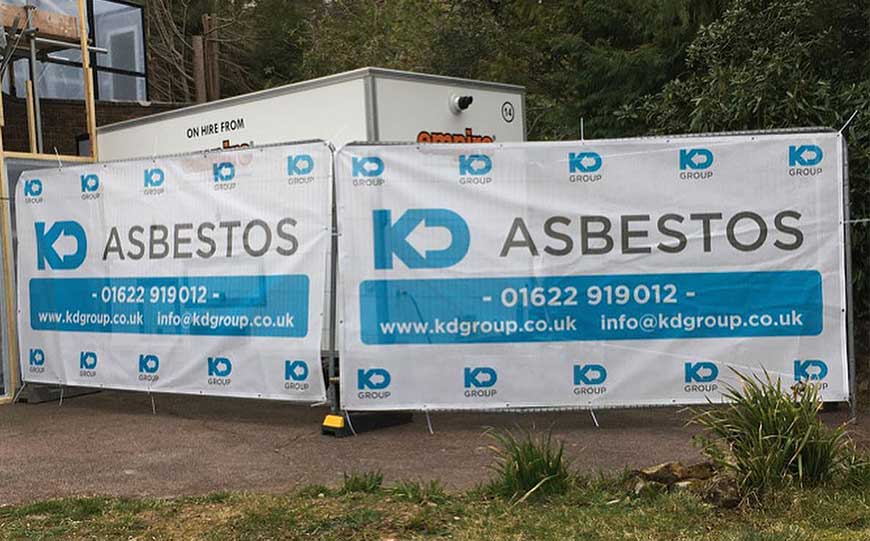
For safety purposes, it’s advisable to leave any asbestos-related job to a qualified professional.
This can be an asbestos removal contractor or an asbestos surveyor.
Some of the advantages of hiring an asbestos company include the following:
Experience & Expertise
An asbestos company would have the knowledge and skill required for asbestos removal.
These skills can take months to learn and would require additional years of experience to perfect.
Ordinarily, an asbestos company would have been in the industry for a long time, and with each project completed, their expertise only increases.
When handling your asbestos water tank, the company has no room for trial and error.
Proper Equipment & Manpower
When dealing with asbestos materials, it’s important to wear appropriate gear for protection.
An asbestos company has the proper equipment and human resources to remove your asbestos water tank safely and effectively.
The equipment used is well-fitted to protect workers’ health and limit the risk of asbestos fibre escaping into the atmosphere during the clearing process.
Professional Advice
Apart from removing asbestos, asbestos companies can also offer valuable advice and support before, during and after the clearing process.
This support is particularly helpful in preventing asbestos fibres from entering your system.
For instance, it’s not recommended to:
- sweep or vacuum the area.
- carry out repairs on damaged asbestos containing materials.
- maintain regular activities in areas with suspected asbestos material.
This advice should be strictly followed, especially if children are involved.
Conclusion
Remember, there is no room for trial and error when dealing with asbestos containing materials.
The risk of incurring a deadly health condition alone should be enough reason to get a professional’s help.
Although using the service of a professional asbestos contractor may seem expensive, this is the safest and only option.
When you consider the cost of acquiring the necessary equipment and accessing authorised disposal facilities, hiring a professional may begin to look like the sensible option.